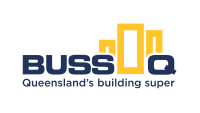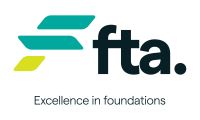Disasters come in all shapes and forms when it comes to life in Queensland, from cyclones to floods and fires, there's always a risk of something. When you’re quoting on and performing repair work on disaster-damaged buildings, the safety of you, your workers and the homeowners is paramount.
So, we strongly suggest you do an individual inspection on each site to determine the extent of any existing or potential future damage.
Our disaster guidelines, repair work contracts advice and the resources below can also help you get on top of the health and safety issues. Don't forget to prepare for the next severe weather event, using our severe weather checklist.
First priorities
- Power and plumbing are your key priority:
- Before power is returned, get a licensed electrician to assess/test any all electrical outlets in the home. Be mindful of homes and premises with PV systems as these may continue to produce power, despite network power outages. Find a licensed electrician via the Master Electricians website.
- Get a licensed plumber to check the sewerage system.
- Photograph and record the condition of the damaged building work before starting repairs.
- Remove all mud, dirt and silt prior to rectification.
- Isolate all electrical power to the building including roof spaces and power to solar systems and Solar PV systems. It is recommended that where work involves electrical work, all electrical installation must be performed by a licensed electrician.
- Isolate all gas and water services.
- Inspect the building for potential contaminates such as asbestos, flammable liquids and gases.
TOP TIP: Have a suitable first aid kit on site as working in disaster conditions can be hazardous.
Key areas to inspect
- Bathrooms (i.e. tiles and waterproofing)
- Blanket/bulk insulation
- Concrete paths and driveways
- Floor tiles
- Kitchen cupboards, vanity units and laundry units
- Moisture retention (i.e. in timber wall and floor frames)
- Painting
- Skirting & architraves
- Skirting and architraves
- Termite management system
- Timber floors
- Trapped water
- Wall sheeting/plasterboard/other wall sheeting
- Wardrobe doors & shelving
- Wet area sheeting.
WARNING: Be mindful of building products containing asbestos. Removal of more than 10m² of bonded asbestos (four standard wall sheets of fibro) requires a “B” Class Asbestos Removal licence.
Before building work starts
- Some building works may require building approval – check with a building certifier first.
- Don’t perform any building work without an appropriate written contract in place.
- If you’re performing work away from home, organise your accommodation prior to arriving.
- Check that all electrical power, solar systems (including PVs), gas and water are isolated.
Help the owner get home quicker
You can help homeowners get home as soon as possible by:
- Checking if power can be reinstated to part of the house, using a qualified electrician
- Assessing if a temporary kitchen bench can be installed while waiting for a new kitchen
- For homes with multiple bathrooms, get one bathroom up and running first.
Resources
WHS resources
- Dealing with mould after a storm, flood or cyclone (Queensland Health fact sheet)
- Infection risks from flood recovery and response work (Worksafe Queensland)
- Flood safety fact sheet (Work Safe Queensland)
- Storms and floods – information for workplaces (Work Safe Queensland)
- Asbestos Removal (Queensland Building and Construction Commission QBCC)
- Common hazards
Electrical safety resources
- Electrical safety during storms (Work Safe Queensland)
- Flood Repair Fact Sheet (Master Electricians)
- Solar PV systems (Electrical Safety Office)
Rebuilding resources
- Rebuilding after natural disasters (QBCC)
- Guide to Assessment and Repair of Flood Damaged Timber and Timber Framed Houses (Timber Queensland)
- Building resilience to better prepare for the next time disaster strikes
Employer resources
Mould
Prevention
- Preventing mould growth by preventing unwanted water entering a building, limiting the amount of water vapour released inside a building, and reducing dampness and removing excess moisture is the best way to manage risk, but during extreme weather this is not always possible, so you need to attempt to minimise this occurring
- Consider using a mould inhibitor and prevention spray to reduce mould regrowth. This spray can be applied post decontamination and prior to the re-installation of plaster. When using chemical sprays and cleaning solutions, ensure you review the relevant safety data sheets and follow controls outlined by the manufacturer.
If you discover mould
- Wrap and seal contaminated materials as soon as possible to stop spreading
- Porous materials that have been wet for more than 48 hours or have visible mould growth should be removed
- Where this is not possible, materials must be dried and cleaned
- Dry the wet areas
- Fans, wet vacuums, dehumidification units, heaters or air conditioners on dry mode can be used to speed up the drying process
- Thoroughly clean contaminated surfaces and materials using water and detergent (soapy water) or a vinegar solution and drying completely. When using cleaning agents, ensure that workers are provided with the PPE stated in the product SDS
- Clean all tools, equipment and other items used on the affected areas after use
- Restrict access to the affected areas to limit the number of people exposed
- Ensure workers are provided with proper PPE (e.g. masks, respirators, safety gloves etc.)
- a properly fitted disposable P2 respirator, P2 with carbon activated filter layer or full face respirators are recommended for use in mould removal/cleaning, etc.
- When issuing respiratory protective equipment (RPE), ensure that it has been fit tested, and workers are clean shaven when using. Workers must understand the correct usage of RPE prior to wearing.
- Do a final clean up to remove any dust that may have settled within the area or nearby
Health and Medical considerations
- Ask your workers if they have any respiratory conditions such as asthma which could make exposure worse, and put in place additional controls
- People who are in a general state of good health and don’t have a history of respiratory or immunological conditions are unlikely to be affected by mould growth, however it is still important that all workers are protected from mould exposure.
- People with asthma, allergies or other respiratory conditions may be more sensitive to mould
- People with weakened immune systems, chronic lung diseases or other related illnesses are more at risk of mould infection, particularly in their lungs
- Consider if at risk workers can be excluded from this work
- Mould can affect the skin, eyes, throat and nose as well as compromise a person’s respiratory and immune systems
WHS documentation
- Consider what safety documentation you need to have in place when working with a possibly contaminated atmosphere from dust, mould or hazardous chemicals.
- Ensure that workers engaging in mould removal and cleaning are trained to understand the job task, hazards and risks associated.
Need more information?
If you haven’t found the answer to your questions on our website, give us a call or email us.





